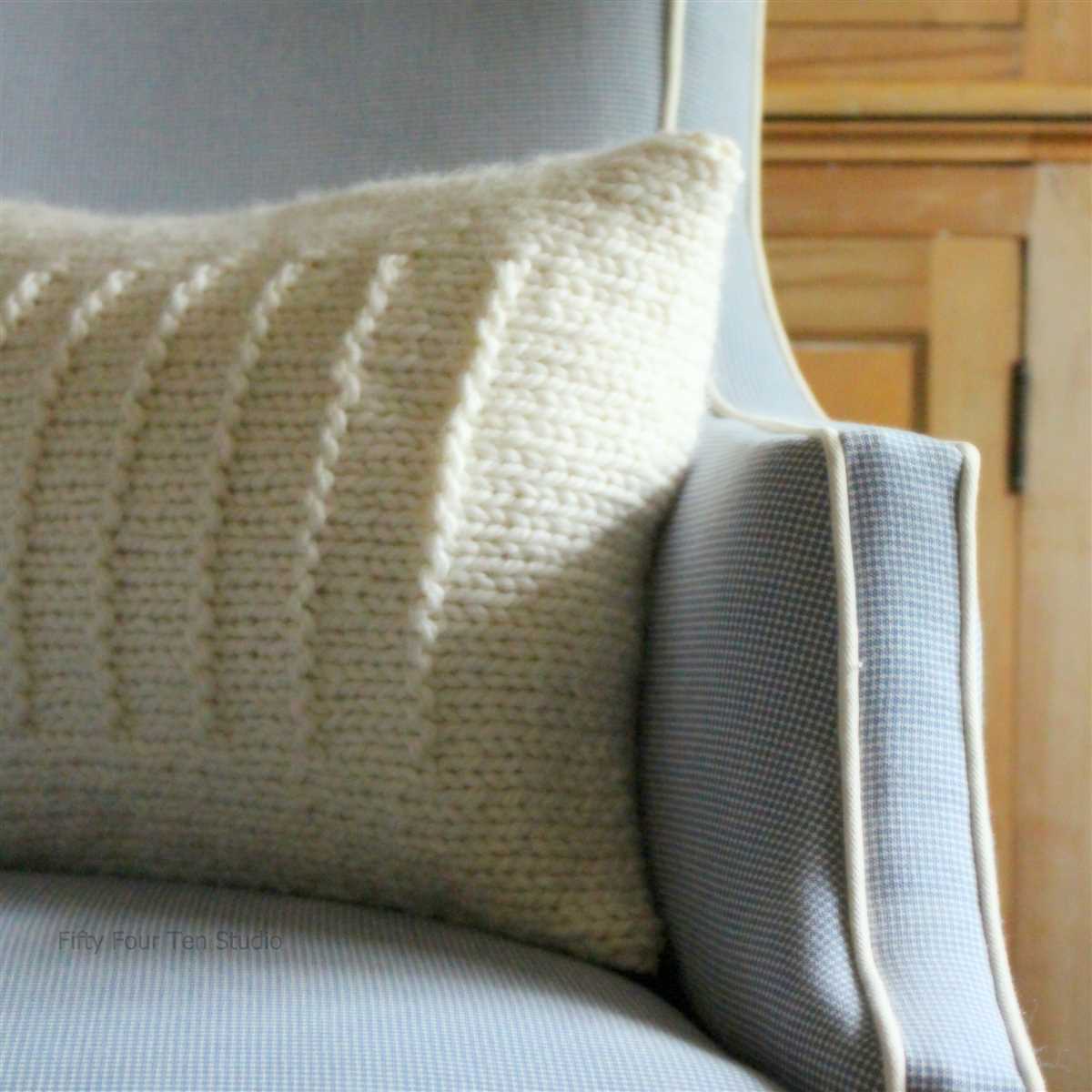
Knitting your own cushion cover is not only a fun and creative project, but it also allows you to personalize your home decor with a touch of your own personality. If you are new to knitting or just looking for a quick and easy project, this easy knitting pattern cushion cover is perfect for you. With basic knitting stitches and techniques, you can create a beautiful and cozy cushion cover in no time.
One of the best things about this pattern is that it’s suitable for knitters of all skill levels. Whether you’re a beginner or an experienced knitter, you can easily follow along and create a cushion cover that you’ll be proud to display in your home. The pattern uses a simple combination of knit and purl stitches, so even if you’re new to knitting, you’ll quickly get the hang of it.
To get started, all you’ll need is some soft and chunky yarn, knitting needles, and a cushion insert. You can choose any color that matches your home decor and personal style. And don’t worry if you don’t have a cushion insert, you can easily find one at your local craft store or online.
With this easy knitting pattern, you’ll be able to create a cushion cover that adds a cozy and handmade touch to your home. So grab your knitting needles and get ready to create something beautiful!
Materials needed for knitting a cushion cover
Knitting a cushion cover is a popular project for both beginner and experienced knitters. To get started, you will need a few essential materials. Here is a list of the items you will need:
- Yarn: Choose a yarn that is suitable for a cushion cover project. Opt for a thick, durable yarn that will provide warmth and comfort. Consider the color and texture of the yarn to match your desired aesthetic.
- Knitting needles: Select knitting needles that are appropriate for the yarn you have chosen. The size of the needles will depend on the gauge you want to achieve. Check the label of the yarn for recommended needle size.
- Tape measure: A tape measure is essential for checking your gauge and taking measurements of your cushion cover. Use it to ensure that your knitting is the correct size and to help you follow the pattern accurately.
- Scissors: A pair of sharp scissors is necessary for cutting the yarn and tidying up any loose ends. Make sure to have them on hand for easy access during your knitting project.
- Stitch markers: Stitch markers are helpful for keeping track of specific stitches or sections of your knitting. They come in various forms, such as small rings or locking markers, and can be easily attached to your needles.
- Darning needle: A darning needle, or yarn needle, is used for weaving in loose ends and seaming your cushion cover. It should have a large eye to accommodate the yarn and a blunt point for safe and easy use.
- Pattern: Find an easy knitting pattern for a cushion cover that matches your skill level and desired design. You can choose from various patterns online or in knitting books. Make sure to read and understand the pattern instructions before you begin knitting.
With these materials in hand, you will be well-equipped to start your knitting project and create a cozy and stylish cushion cover for your home.
Step-by-step instructions for knitting a cushion cover
Knitting a cushion cover is a great way to add a personal touch to your home decor. With just a few simple steps, you can create a cozy and stylish cushion cover that will complement any interior. Here is a step-by-step guide to help you get started.
Materials you will need:

- Knitting needles
- Yarn of your choice
- Tape measure
- Scissors
Step 1: Measure your cushion
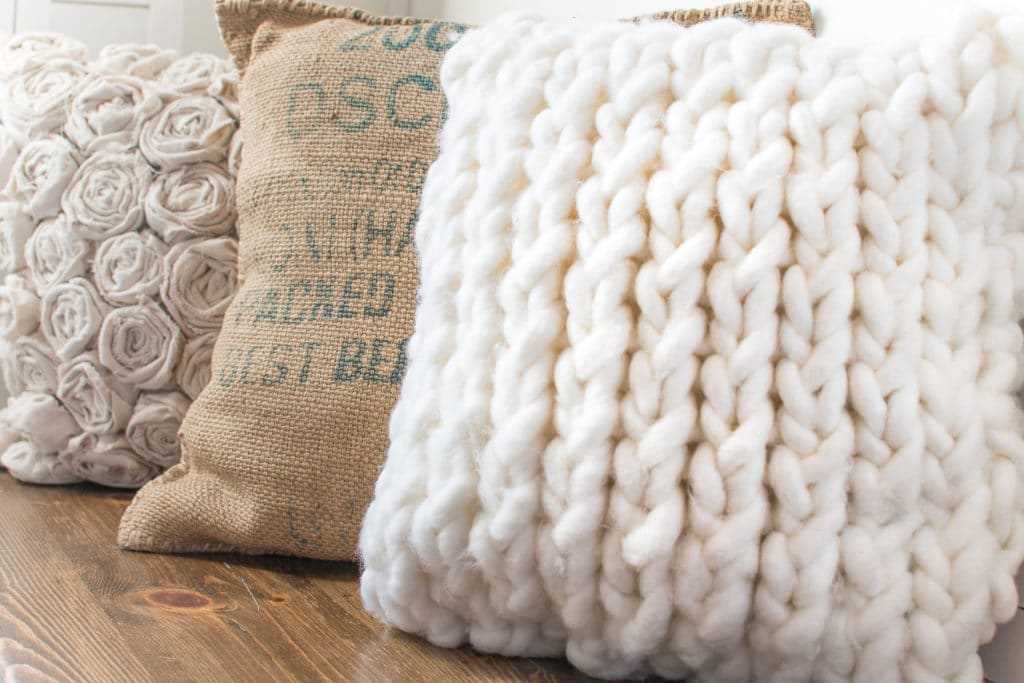
The first step in knitting a cushion cover is to measure the size of your cushion. Use a tape measure to determine the width and height of the cushion, as this will help you determine the number of stitches and rows you need to knit.
Step 2: Choose your yarn and needles
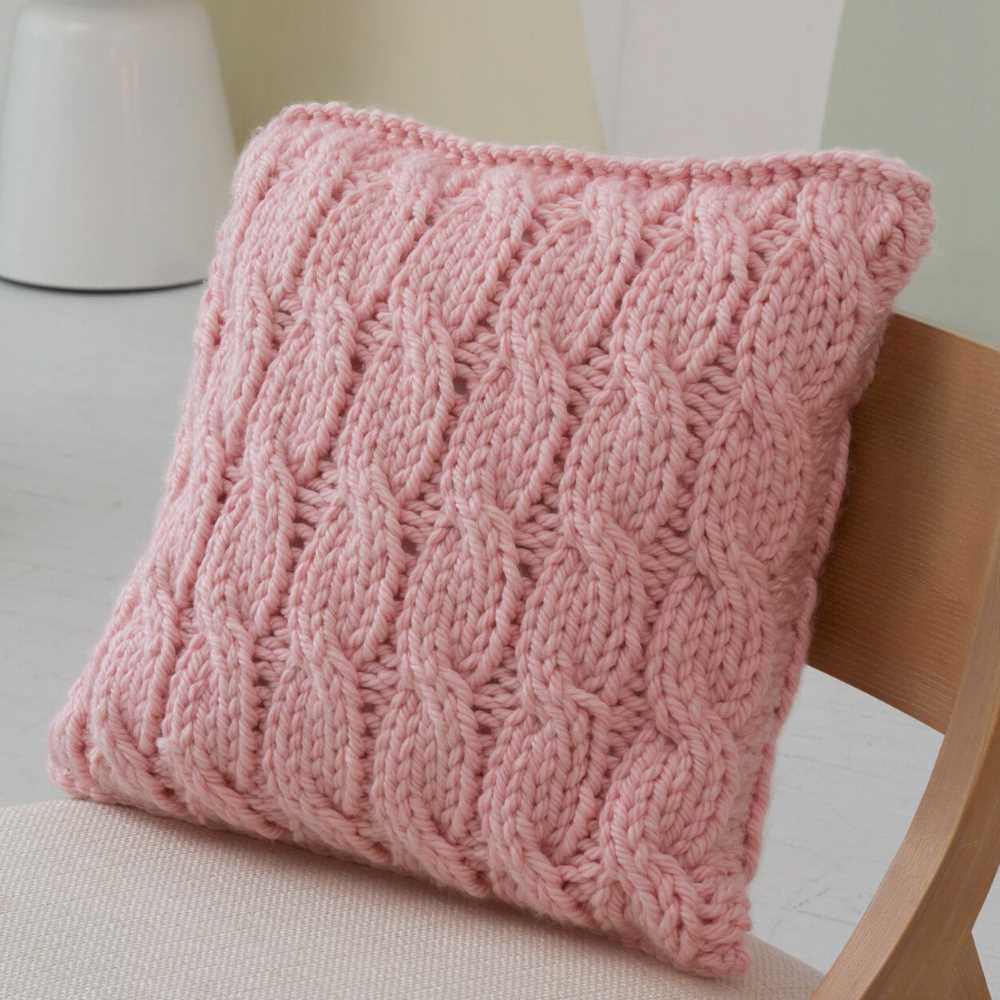
Next, choose the yarn and knitting needles that you want to use for your cushion cover. Make sure that the yarn is suitable for the size of the needles you have chosen, as this will affect the overall look and feel of the cover.
Step 3: Cast on and knit the front panel

Once you have chosen your yarn and needles, it’s time to cast on the stitches for the front panel of the cushion cover. Follow the knitting pattern instructions to cast on the required number of stitches, and then begin knitting the front panel in your desired stitch pattern.
Step 4: Knit the back panel
After you have finished knitting the front panel, repeat the same process to knit the back panel of the cushion cover. Make sure to cast on the same number of stitches as the front panel, and choose the same stitch pattern if desired.
Step 5: Sew the panels together
Once you have completed knitting both the front and back panels, it’s time to sew them together. Place the panels right sides together and use a yarn needle to sew the sides and bottom of the cushion cover. Leave one side open for inserting the cushion.
Step 6: Insert the cushion and sew it closed
Finally, insert your cushion into the cover through the open side, and then use the yarn needle to sew it closed. Make sure to secure the stitches tightly to ensure that the cushion stays in place.
And there you have it – a beautiful knitted cushion cover! You can experiment with different yarn colors and stitch patterns to create a unique and personalized design that reflects your style. Enjoy your new cushion cover and the cozy atmosphere it brings to your home!
Choosing the right type of yarn for your cushion cover
When it comes to knitting a cushion cover, one of the most important factors to consider is the type of yarn you choose. The right yarn can make all the difference in creating a beautiful, comfortable, and durable cushion cover.
Fiber content: One of the first things to consider is the fiber content of the yarn. Different fibers have different characteristics and properties. For a cushion cover, it is important to choose a yarn that is soft and comfortable, as it will likely come into contact with your skin. Natural fibers like cotton, bamboo, and merino wool are great choices for cushion covers as they are soft, breathable, and hypoallergenic.
Weight: The weight of the yarn will also affect the final look and feel of your cushion cover. Lighter weight yarns will result in a more delicate and lacy design, while heavier weight yarns will create a chunkier and more substantial texture. Consider the style and purpose of your cushion cover when choosing the weight of the yarn. For a cozy and warm cushion cover, opt for a heavier weight yarn, while a lighter weight yarn would be perfect for a decorative and airy design.
Color and texture: The color and texture of the yarn can also play a significant role in the overall look of your cushion cover. If you want a classic and timeless design, neutral and solid colors are a safe choice. However, if you want to add some visual interest and personality to your cushion cover, consider using yarns with variegated or self-striping patterns. Additionally, textured yarns like boucle or twisted yarns can add extra depth and dimension to your knitting.
Ease of care: Lastly, consider the ease of care when choosing your yarn. Cushion covers are prone to dirt and spills, so it is important to choose a yarn that is easy to clean and maintain. Look for yarns that can be machine washed or spot cleaned easily without losing their shape or color. This will ensure that your cushion cover remains in good condition for a long time.
In conclusion, when knitting a cushion cover, take the time to carefully choose the right type of yarn. Consider the fiber content, weight, color and texture, as well as the ease of care. By selecting the right yarn, you can create a cushion cover that is not only beautiful and comfortable but also durable and easy to maintain.
Knitting techniques for beginners
Knitting is a popular craft that allows you to create beautiful and functional items using yarn and needles. If you are a beginner knitter, it’s important to start with some basic techniques to build your skills. Here are a few key techniques to get you started:
Casting on
Casting on is the first step in starting a knitting project. It is the process of creating the first row of stitches on your needle. There are several casting on methods to choose from, but the long tail cast on is a common technique for beginners. It involves creating a slipknot on your needle and then forming additional stitches by wrapping the working yarn around both the needle and your thumb.
Knit stitch
The knit stitch is the most basic stitch in knitting. It is used to create a smooth and flat fabric. To knit, you insert the right-hand needle into the first stitch on the left-hand needle from left to right, bring the yarn over the right-hand needle and pull it through the stitch. Repeat this process for each stitch until you reach the end of the row.
Purl stitch
The purl stitch is the reverse of the knit stitch. It creates a bumpy texture on your fabric. To purl, you insert the right-hand needle into the first stitch on the left-hand needle from right to left, bring the yarn under the right-hand needle and pull it through the stitch. Repeat this process for each stitch until you reach the end of the row.
Binding off
Binding off is the last step in completing a knitting project. It is the process of finishing the edge of your work and securing the stitches. To bind off, you knit the first two stitches, then insert the left-hand needle into the first stitch on the right-hand needle and lift it over the second stitch and off the needle. Repeat this process for each stitch until you have one stitch left on the right-hand needle, then cut the yarn and pull it through the remaining stitch to secure it.
These are just a few of the basic knitting techniques for beginners. Once you’ve mastered these skills, you can experiment with different stitch patterns and more complex projects. Happy knitting!
Tips and Tricks for Knitting a Perfect Cushion Cover
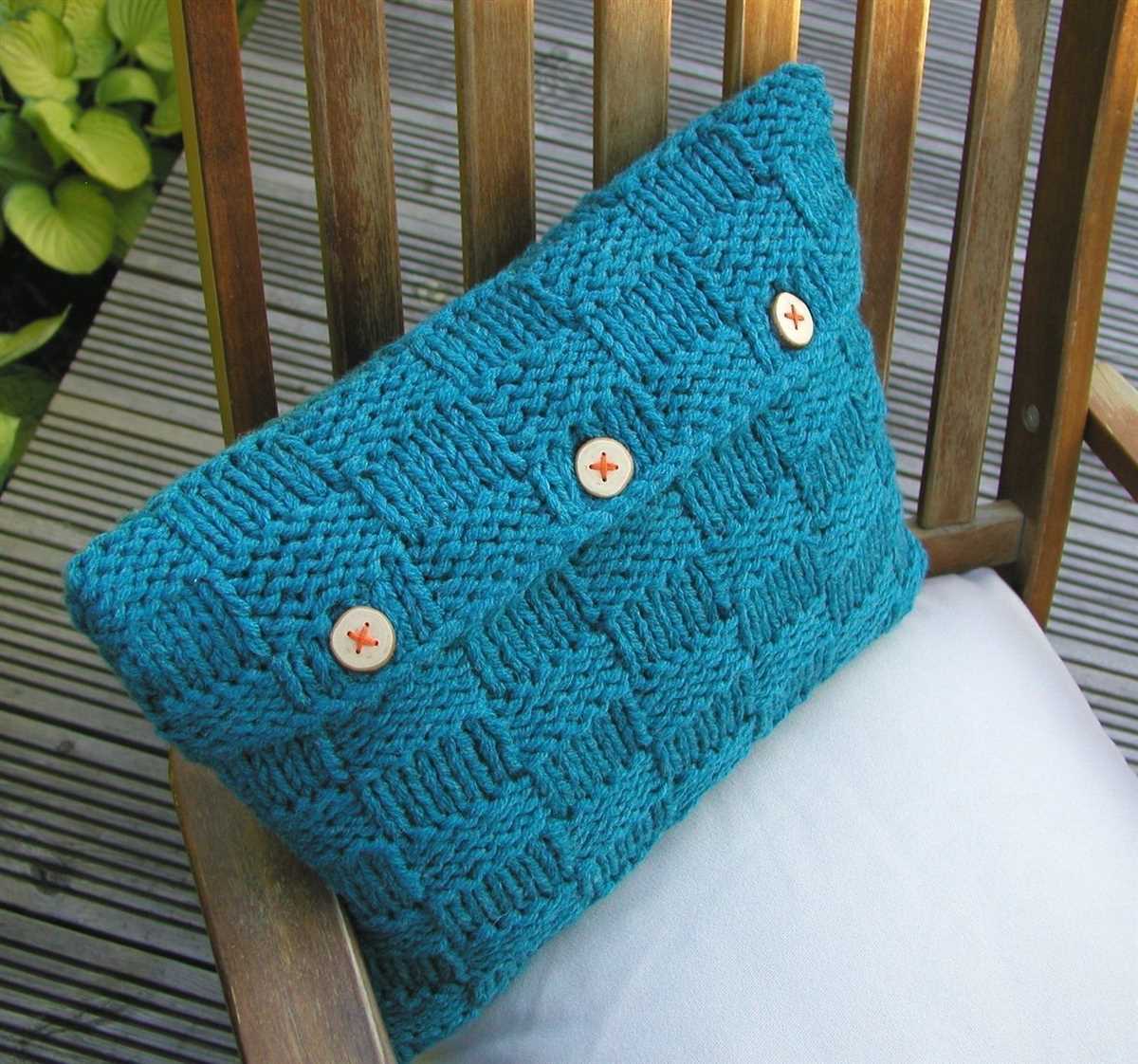
Knitting a cushion cover can be a rewarding and enjoyable project, but it’s important to pay attention to the details to ensure a perfect result. Here are some tips and tricks to help you achieve a beautiful cushion cover:
1. Choose the right yarn and needles
Before you start knitting, make sure to select the right yarn and needles for your project. Consider the type of cushion cover you want to create and the desired texture. Chunky yarn and larger needles will give you a quicker, bulkier result, while finer yarn and smaller needles will create a more delicate cover.
2. Gauge swatch
Always begin your project with a gauge swatch. This will help you determine the number of stitches and rows per inch, ensuring your cushion cover fits properly. It’s better to spend a little extra time on a swatch than to end up with a cover that is too small or too large.
3. Use stitch markers

Using stitch markers can be incredibly helpful in keeping track of your stitch count and pattern repeats. They can help you avoid mistakes and ensure that your cushion cover has a consistent appearance. Place a stitch marker every few repeats, and you’ll be able to identify any errors before they become too difficult to fix.
4. Blocking
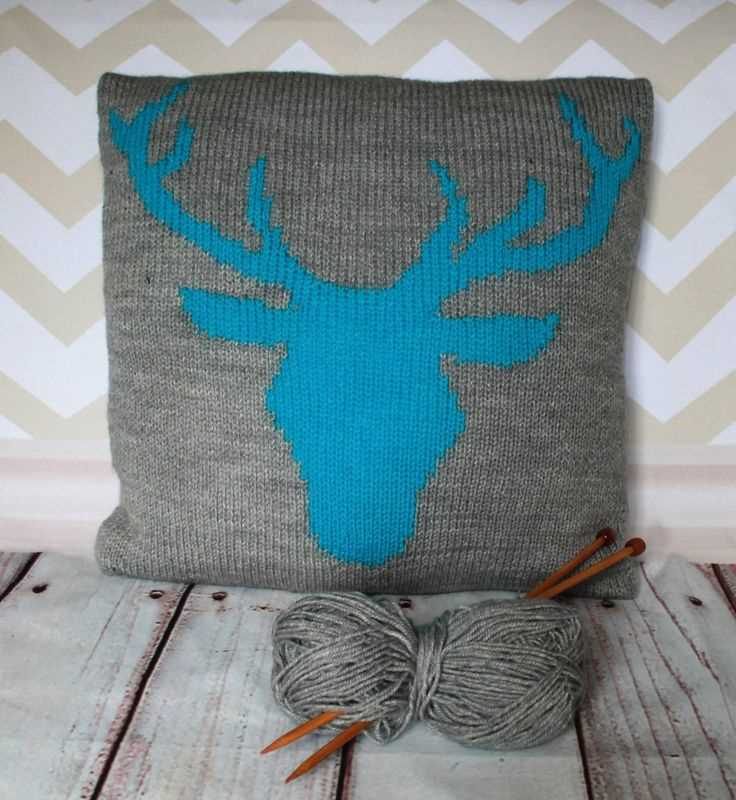
Once you’ve completed your knitting, don’t forget to block your cushion cover. Blocking helps to even out your stitches and gives your finished piece a more polished look. Follow the instructions for your chosen yarn to block your cover properly, whether it’s through wet blocking or steam blocking.
5. Finishing touches
Finally, pay attention to the finishing touches of your cushion cover. Take the time to weave in any loose ends and seam up any edges. You can also add decorative elements, such as buttons or a zipper, to enhance the appearance and functionality of your cover. These small details can make a big difference in the overall look of your cushion cover.
By following these tips and tricks, you’ll be able to knit a perfect cushion cover that will add warmth and beauty to your home decor. Happy knitting!
Adding decorative details to your cushion cover
Once you have completed the basic knitting pattern for your cushion cover, it’s time to add some decorative details to make it truly unique. Adding these details not only enhances the overall aesthetic appeal of the cushion cover but also allows you to showcase your creativity and personal style.
Embroidery: One way to add decorative details is through embroidery. You can use different stitches and colors to create intricate patterns or simple motifs on your cushion cover. Embroidery adds texture and depth to the design, making it visually appealing.
Buttons: Another option is to embellish your cushion cover with buttons. You can sew buttons of different shapes, sizes, and colors onto the cover to create a visually interesting pattern or design. Buttons can be placed in a specific arrangement or scattered randomly to create a more whimsical look.
Ribbons and trims: Ribbons and trims can also be used to add decorative details to your cushion cover. You can sew these on the edges or corners of the cover, or create a border with them. Ribbons and trims come in a variety of colors, patterns, and textures, allowing you to customize your cushion cover to suit your taste.
Appliques: If you’re looking for a more unique and three-dimensional effect, consider adding appliques to your cushion cover. Appliques are decorative fabric shapes that can be sewn onto the cover. They can be made from the same fabric as the cover or contrasting fabric to create a pop of color or pattern.
Combining techniques: Don’t limit yourself to just one decorative detail. You can combine different techniques, such as embroidery with buttons or ribbons with appliques, to create a truly one-of-a-kind cushion cover. Experiment with different combinations and placements to find the perfect balance of decorative elements.
In conclusion, adding decorative details to your cushion cover allows you to personalize it and make it truly unique. Whether you choose to embroider, use buttons, ribbons, trims, or appliques, the possibilities are endless. Don’t be afraid to experiment and let your creativity shine through in your knitting project!
Different designs and patterns for knitting cushion covers
Knitting cushion covers allow for endless design possibilities and can add a cozy touch to any home decor. Whether you prefer simple and classic patterns or bold and intricate designs, there is a knitting pattern out there for everyone. Here are a few different designs and patterns to inspire your next project:
1. Basketweave pattern:
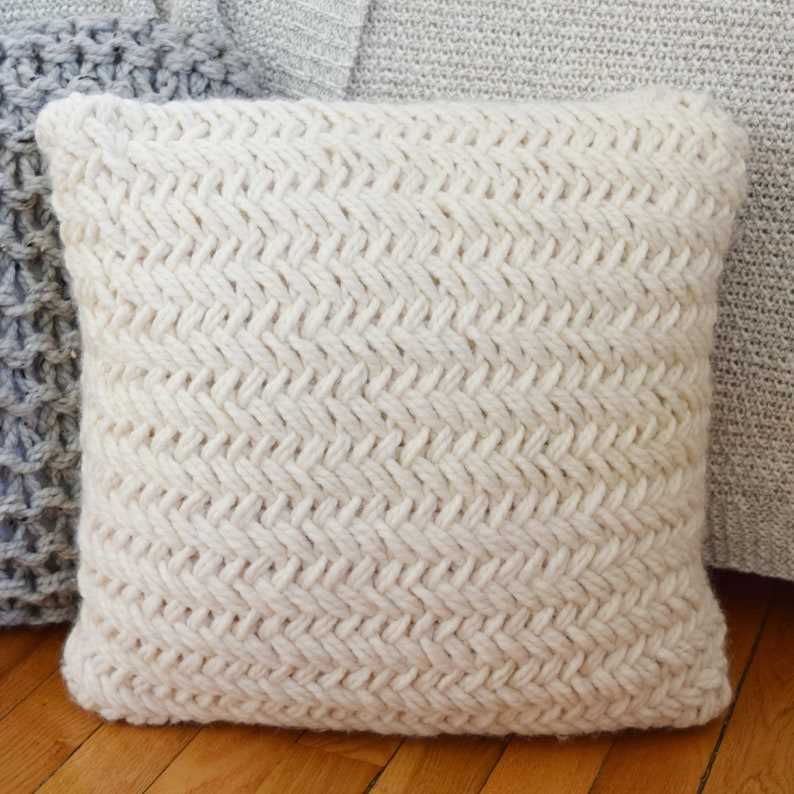
The basketweave pattern is a classic choice for knitting cushion covers. It creates a textured design that resembles a woven basket. This pattern is achieved by alternating knit and purl stitches in blocks, creating a visually interesting and cozy texture. It is a great choice for those looking for a timeless and elegant design.
2. Cable knit pattern:
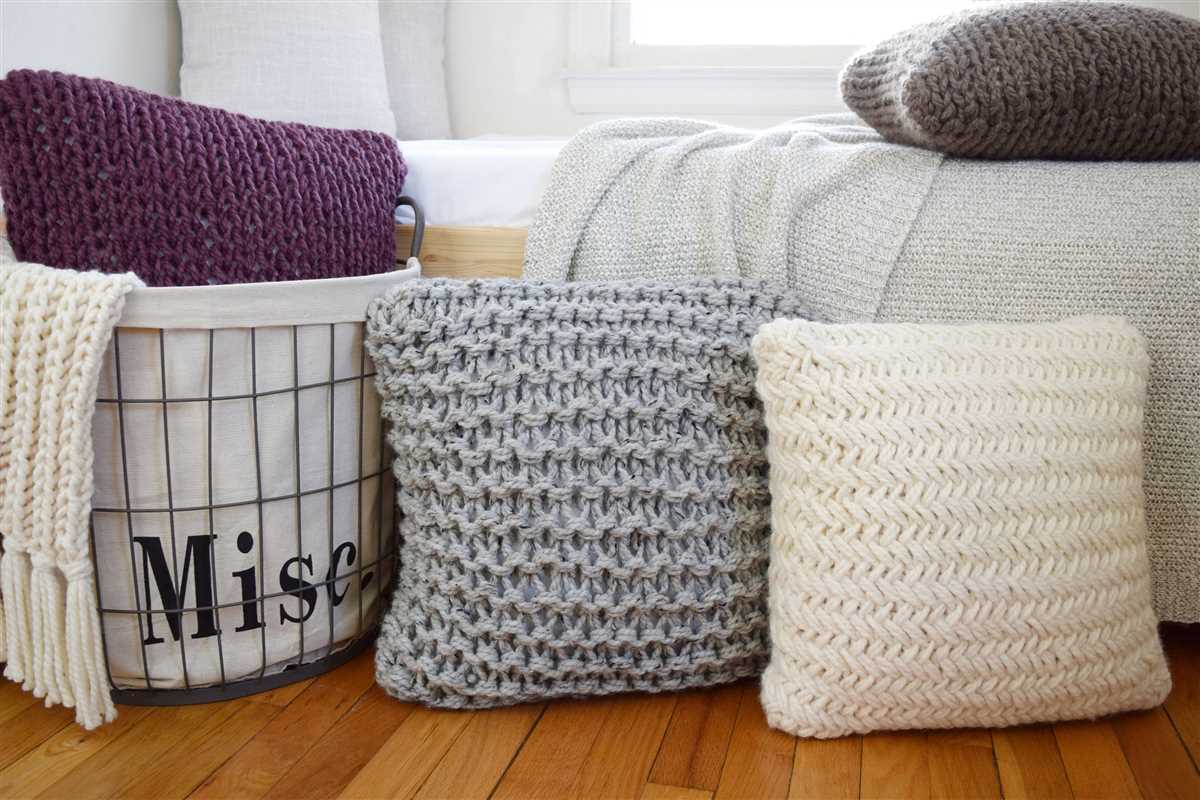
Cable knit patterns are another popular choice for cushion covers. They add a touch of sophistication and can create intricate and eye-catching designs. Cable knitting involves crossing stitches over each other to create a twisted effect, resulting in beautiful cable patterns that can be simple or complex. It is a great choice for those looking to add a bit of texture and drama to their cushion covers.
3. Fair Isle pattern:
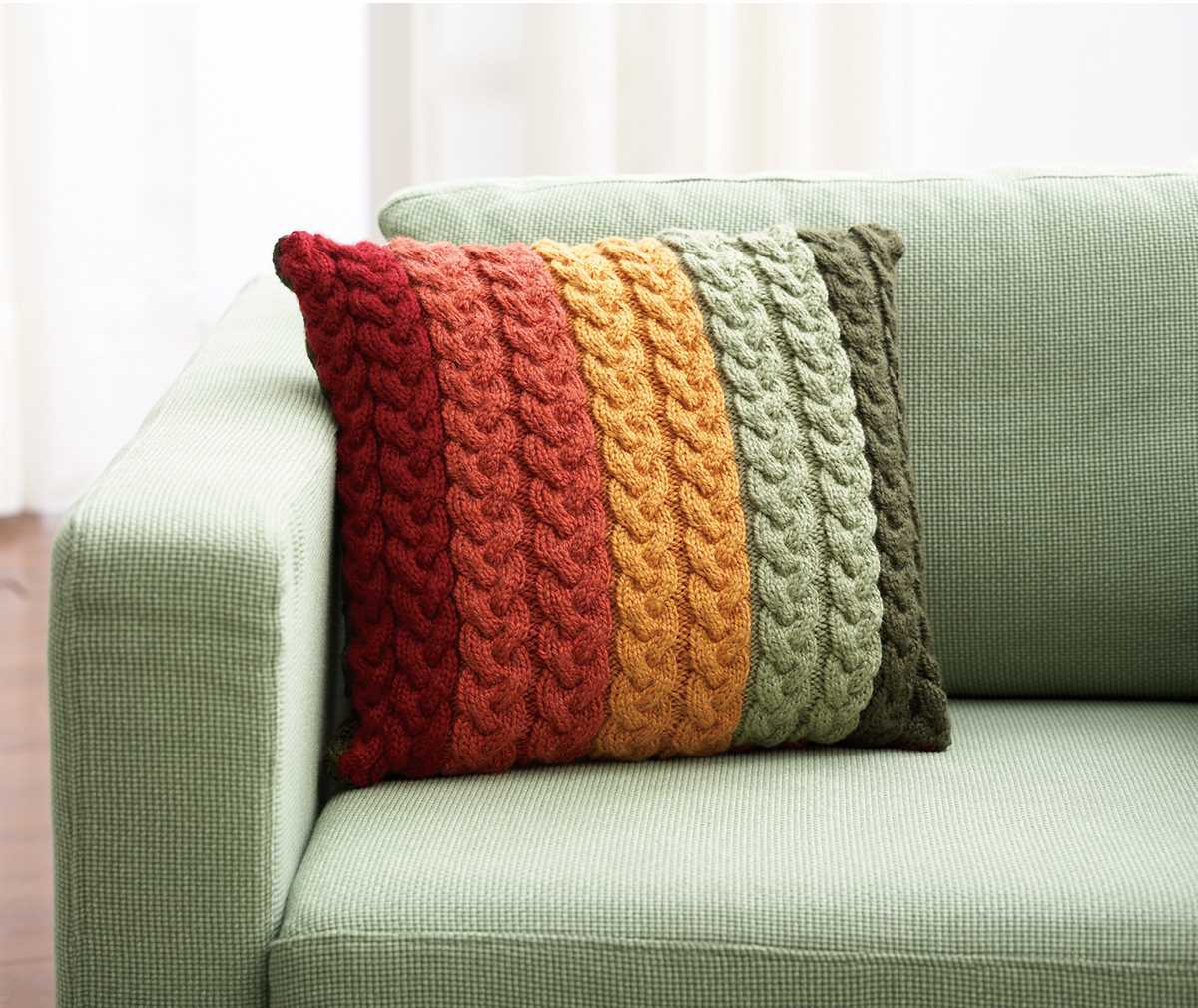
The Fair Isle pattern is a traditional knitting technique that originated in the Shetland Islands of Scotland. It involves using multiple colors to create intricate and colorful designs. Fair Isle patterns are often associated with traditional Nordic and Scottish designs, featuring motifs such as geometric shapes, animals, and flowers. Knitting a cushion cover with a Fair Isle pattern can add a cozy and whimsical touch to any space.
4. Lace pattern:
If you prefer a more delicate and feminine look, a lace pattern might be the perfect choice for you. Lace knitting involves creating intricate patterns with large decorative holes, resulting in a delicate and airy fabric. Lace patterns can range from simple and understated to complex and ornate. They are a great choice for adding an elegant and romantic touch to your cushion covers.
- Basketweave pattern for a timeless and elegant design.
- Cable knit pattern for added sophistication and texture.
- Fair Isle pattern for a cozy and whimsical touch.
- Lace pattern for a delicate and feminine look.
Whichever design you choose, knitting cushion covers can be a fun and rewarding project. Experiment with different patterns, colors, and yarns to create a unique and personalized piece that will add comfort and style to your home.
How to properly care for and wash your knitted cushion cover
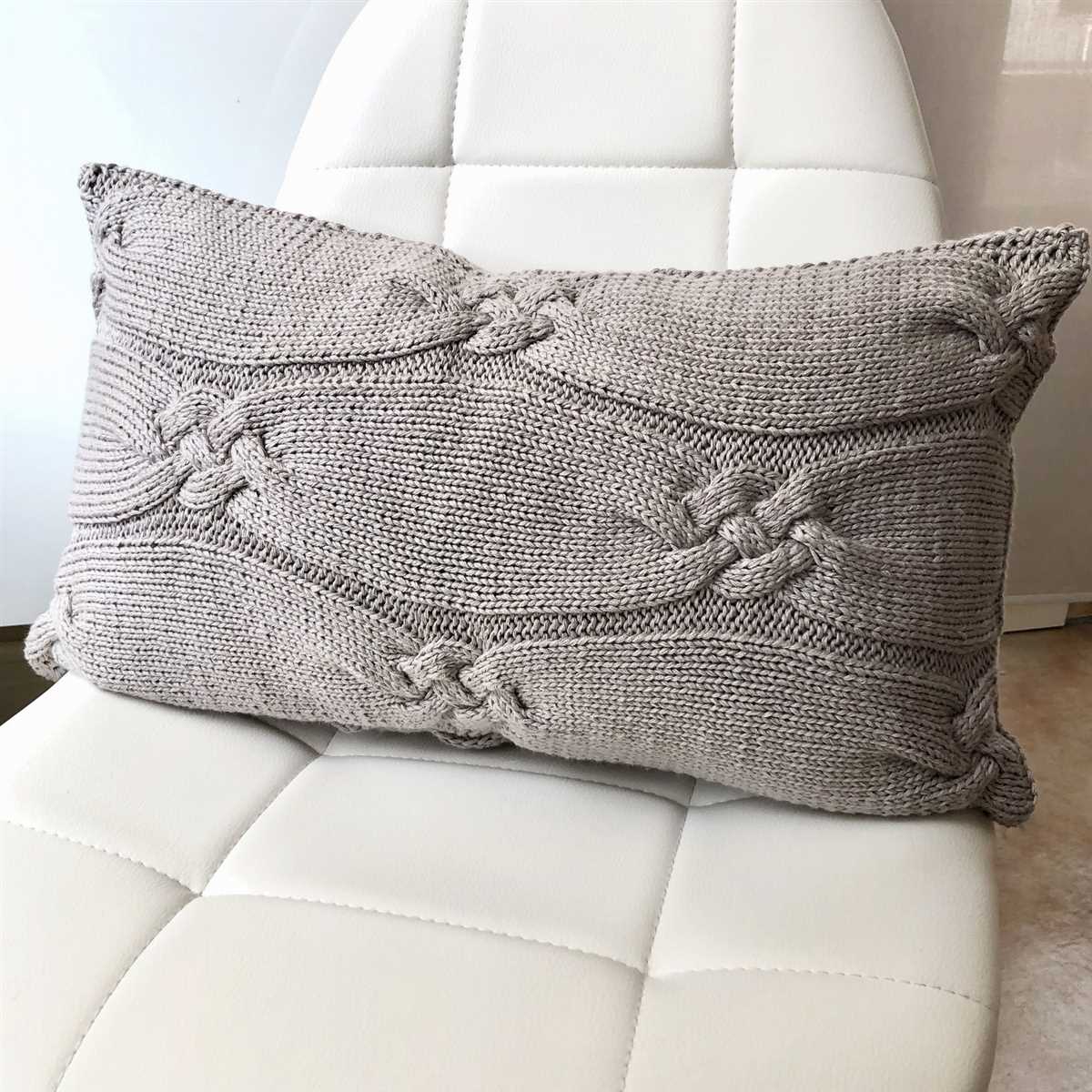
Knitted cushion covers can add a cozy and stylish touch to any living space. However, it’s essential to know how to properly care for and wash them to maintain their appearance and durability. Follow these simple steps to ensure that your knitted cushion cover stays in excellent condition:
1. Check the care label
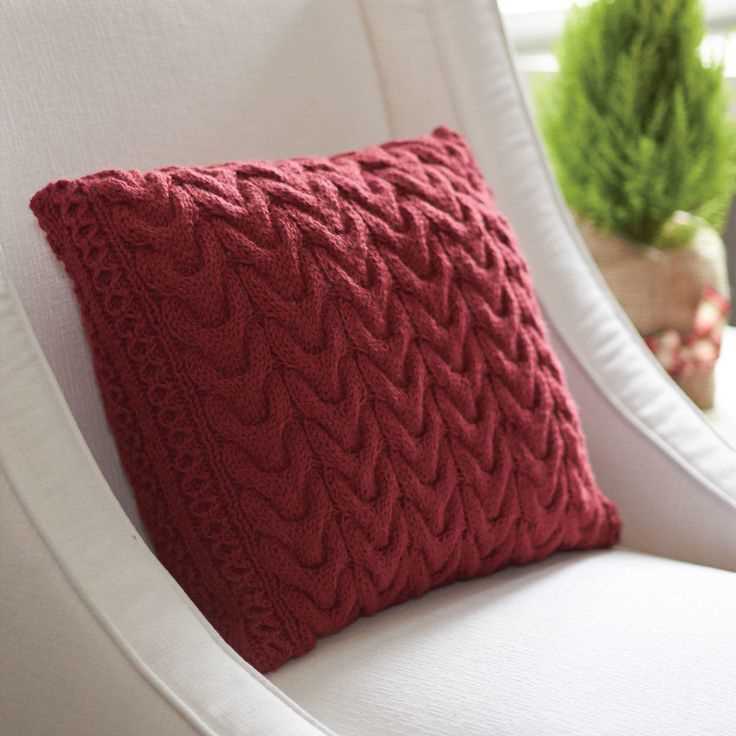
Before washing your knitted cushion cover, always check the care label for any specific instructions. Some knitted materials may require special care, such as hand-washing or using a gentle cycle. Following the instructions on the care label will help prevent any damage to the fabric.
2. Hand-wash or machine-wash with care
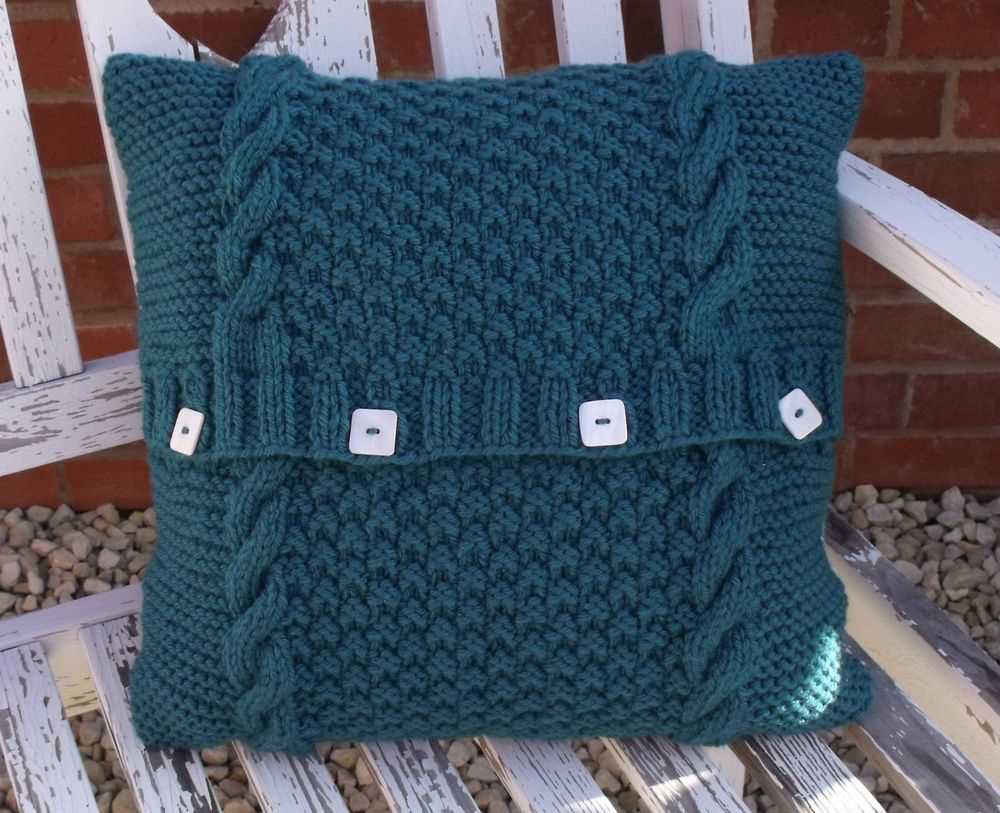
If the care label allows machine-washing, use a gentle cycle and cold water to avoid shrinkage or stretching. It’s best to place the knitted cushion cover in a mesh laundry bag to protect it from getting tangled or snagged. For delicate knits or if the care label specifies, hand-washing is recommended. Use a mild detergent and gently swirl the cushion cover in the water without agitating or wringing it.
3. Dry flat
After washing, carefully remove excess water from the knitted cushion cover by gently pressing it between towels. Avoid wringing or twisting the fabric, as this can cause it to lose shape. Then, reshape the cushion cover to its original form and lay it flat on a clean, dry towel to air dry. Avoid hanging it or placing it in direct sunlight, as this can stretch or fade the fabric.
4. Store properly
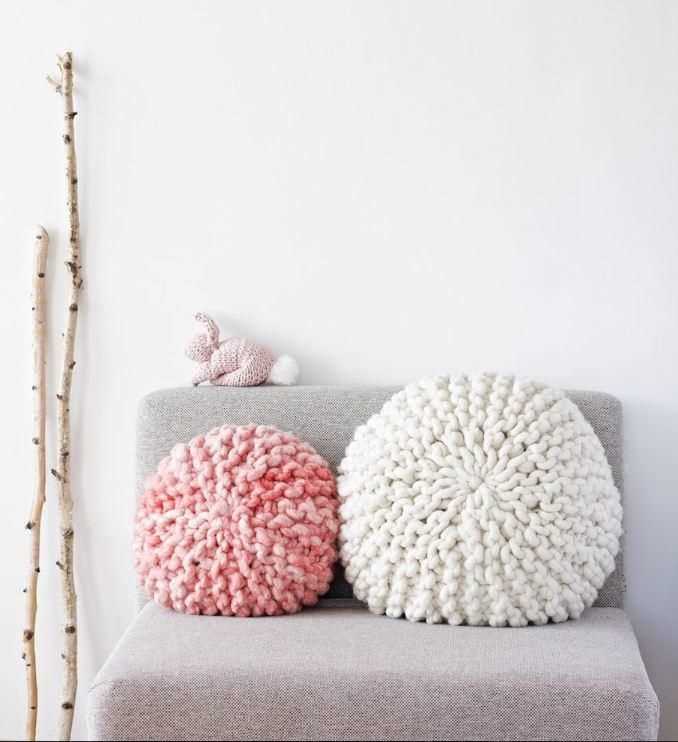
When not in use, it’s important to store your knitted cushion cover properly to avoid any damage. Fold it neatly and place it in a breathable storage bag or an airtight container to protect it from dust, moths, and other potential hazards. Store it in a cool, dry place to maintain its quality.
By following these simple care instructions, you can keep your knitted cushion cover looking beautiful and extend its lifespan. Remember to always check the care label for specific instructions and use gentle methods to wash and dry the fabric.
Using different knitting stitches for your cushion cover

When it comes to knitting a cushion cover, selecting the right stitches can help create an interesting and unique design. By using different stitches, you can add texture, depth, and visual appeal to your cushion cover while also enhancing its overall beauty and style.
One popular stitch pattern for cushion covers is the seed stitch. This stitch creates a bumpy texture and can be easily achieved by alternating knit and purl stitches within each row. The seed stitch is simple yet effective in adding depth and visual interest to your cushion cover.
Another option to consider is the cable stitch. This stitch creates a braided or twisted effect, giving your cushion cover an intricate and sophisticated look. Cable stitches can vary in complexity, ranging from basic cables to more intricate designs. They are an excellent choice for adding a touch of elegance and intricacy to your cushion cover.
If you want to create a more open and airy feel, you can try lace stitches. Lace stitches create delicate and intricate patterns, often resembling leaves or flowers. This stitch brings a touch of femininity and elegance to your cushion cover, making it perfect for a cozy and romantic setting.
In addition to these stitches, you can also experiment with colorwork, using different colors of yarn to create patterns and designs on your cushion cover. Fair Isle and intarsia are two popular colorwork techniques that can add vibrancy and visual interest to your cushion cover.
When selecting the stitches for your cushion cover, consider the overall style and theme you want to achieve. Whether you prefer a classic, modern, or bohemian look, there are countless stitch combinations that can help you create the perfect cushion cover for your home.
Adjusting the size of your cushion cover
When following an easy knitting pattern for a cushion cover, it is important to consider the size of your desired finished project. While the original pattern may provide specific measurements, you may need to adjust it to fit your own cushion. This can be easily done by making a few changes to the pattern.
1. Changing the number of stitches: If you want a larger cushion cover, you can increase the number of stitches you cast on. Similarly, if you want a smaller cushion cover, you can decrease the number of stitches. Keep in mind that changing the number of stitches will also affect the dimensions of the cover, so make sure to calculate the new measurements accordingly.
2. Adjusting the gauge: Another way to change the size of your cushion cover is by adjusting the gauge of your knitting. By using a larger or smaller knitting needle, you can create larger or smaller stitches, which will result in a larger or smaller cushion cover. Make sure to knit a gauge swatch to determine the correct needle size and adjust accordingly.
3. Modifying the pattern repeat: If the pattern you are using has a repeated pattern, you can modify the number of repeats to adjust the size. For example, if the pattern calls for a repeat of 10 stitches and you want a larger cover, you can increase the number of repeats to 12 or 14 stitches. Conversely, if you want a smaller cover, you can decrease the number of repeats to 8 or 6 stitches.
By following these steps, you can easily adjust the size of your cushion cover to fit your specific needs. Whether you want a larger or smaller cover, the flexibility of knitting allows you to customize your project to your liking.
Personalizing Your Cushion Cover
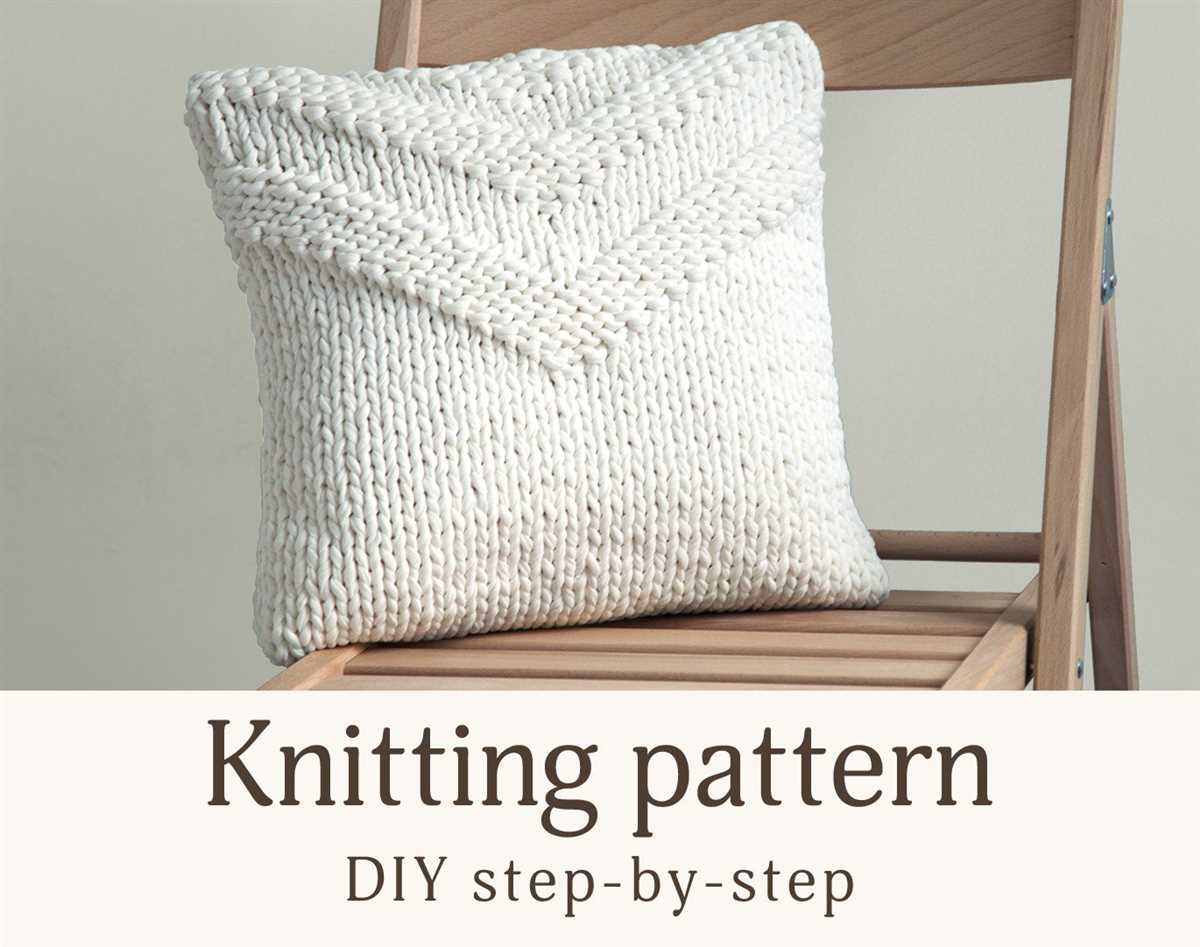
When it comes to adding a personal touch to your cushion cover, there are countless creative ways to make it unique and special. Whether you want to showcase your knitting skills or incorporate sentimental elements, here are some ideas to inspire you:
1. Embroidery
Embroidery is a fantastic way to personalize your cushion cover with intricate designs and patterns. You can use different colors of thread to create beautiful motifs, monograms, or even words that hold significance to you. Explore various embroidery stitches like satin stitch, backstitch, or French knots to bring your design to life.
2. Applique
Applique is another technique that allows you to add unique elements to your cushion cover. By sewing or gluing fabric pieces onto the cover, you can create shapes, animals, or floral designs that reflect your personal style. Play with different textures and colors of fabric to create a visually striking applique.
3. Buttons and Beads
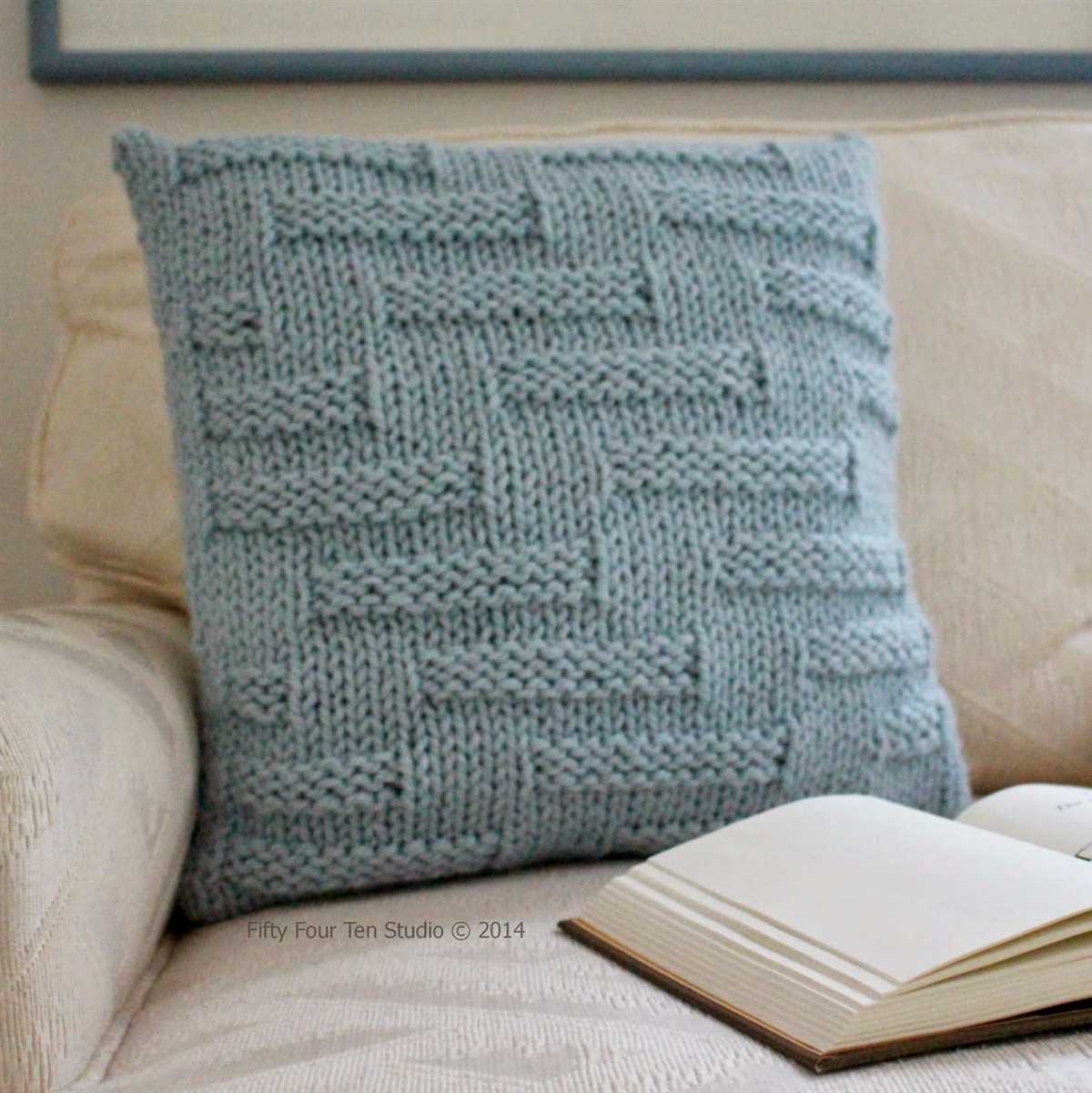
Add an extra touch of charm by incorporating buttons or beads into your cushion cover. You can sew them onto the cover in specific patterns or arrange them randomly for a whimsical look. Choose buttons or beads in various sizes, colors, and shapes to create a visually appealing design.
4. Patchwork
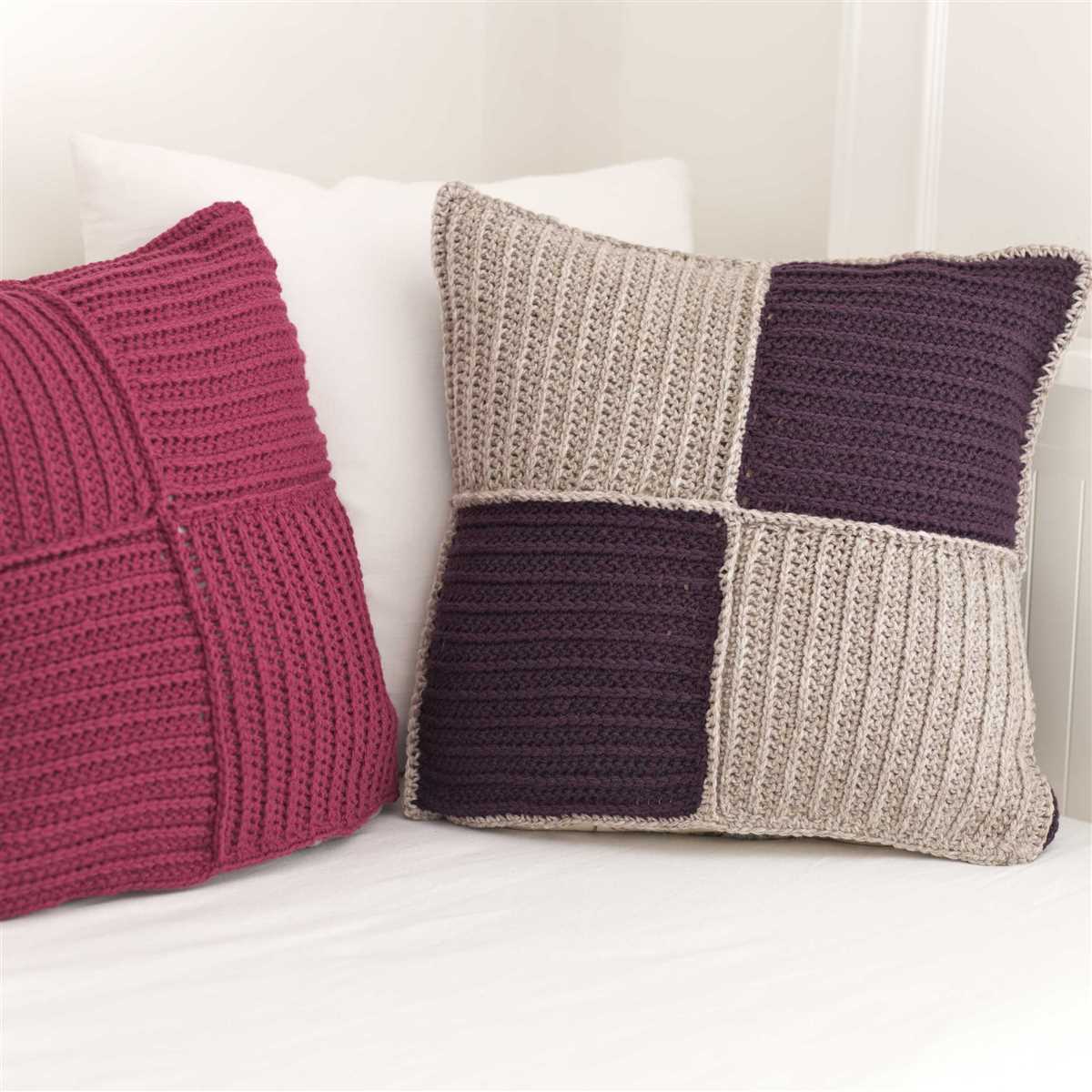
If you have extra fabric scraps lying around, patchwork can be an excellent way to personalize a cushion cover. Cut the fabric into different shapes and stitch them together to create a patchwork pattern. This technique allows you to experiment with different fabric combinations and create a one-of-a-kind design.
5. Photo Transfer
For a sentimental touch, consider transferring your favorite photographs onto your cushion cover. You can use special transfer paper, which allows you to print your photos onto fabric and then easily adhere them to your cover. This way, you can showcase precious memories and make your cushion cover truly unique.
With these creative ways to personalize your cushion cover, you can showcase your individuality and create a home accessory that is truly one-of-a-kind. Whether you choose to embroider, applique, add buttons, create patchwork, or transfer photos, your cushion cover will become a reflection of your unique personality and style. Enjoy the process of making it yours!
Inspiration for knitting your own cushion cover
Knitting your own cushion cover is not only a practical and creative way to decorate your home, but it also allows you to personalize your space and add your own personal touch to it. With so many patterns and designs available, you can easily find inspiration to create a cushion cover that reflects your style and taste.
Here are some ideas to get you started:
- Colorful Stripes: Create a vibrant and playful cushion cover by knitting colorful stripes. You can experiment with different color combinations and widths to create a unique and eye-catching design.
- Textured Patterns: Add an extra dimension to your cushion cover by using textured patterns. Cables, bobbles, or seed stitch can create interesting and tactile surfaces that will make your cushion cover stand out.
- Fair Isle: If you enjoy intricate and detailed designs, consider knitting a Fair Isle cushion cover. This traditional technique involves stranded colorwork and can result in stunning geometric patterns.
- Embroidery Details: Add a touch of embroidery to your cushion cover to make it truly unique. You can embellish your design with flowers, animals, or any other motifs that capture your imagination.
- Lace: For an elegant and delicate look, consider knitting a lace cushion cover. Lace patterns can range from simple and understated to intricate and ornate, allowing you to create a cushion cover that suits your style.
Remember, the possibilities are endless when it comes to knitting your own cushion cover. Get creative, experiment with different patterns and techniques, and have fun making a beautiful and cozy addition to your home!